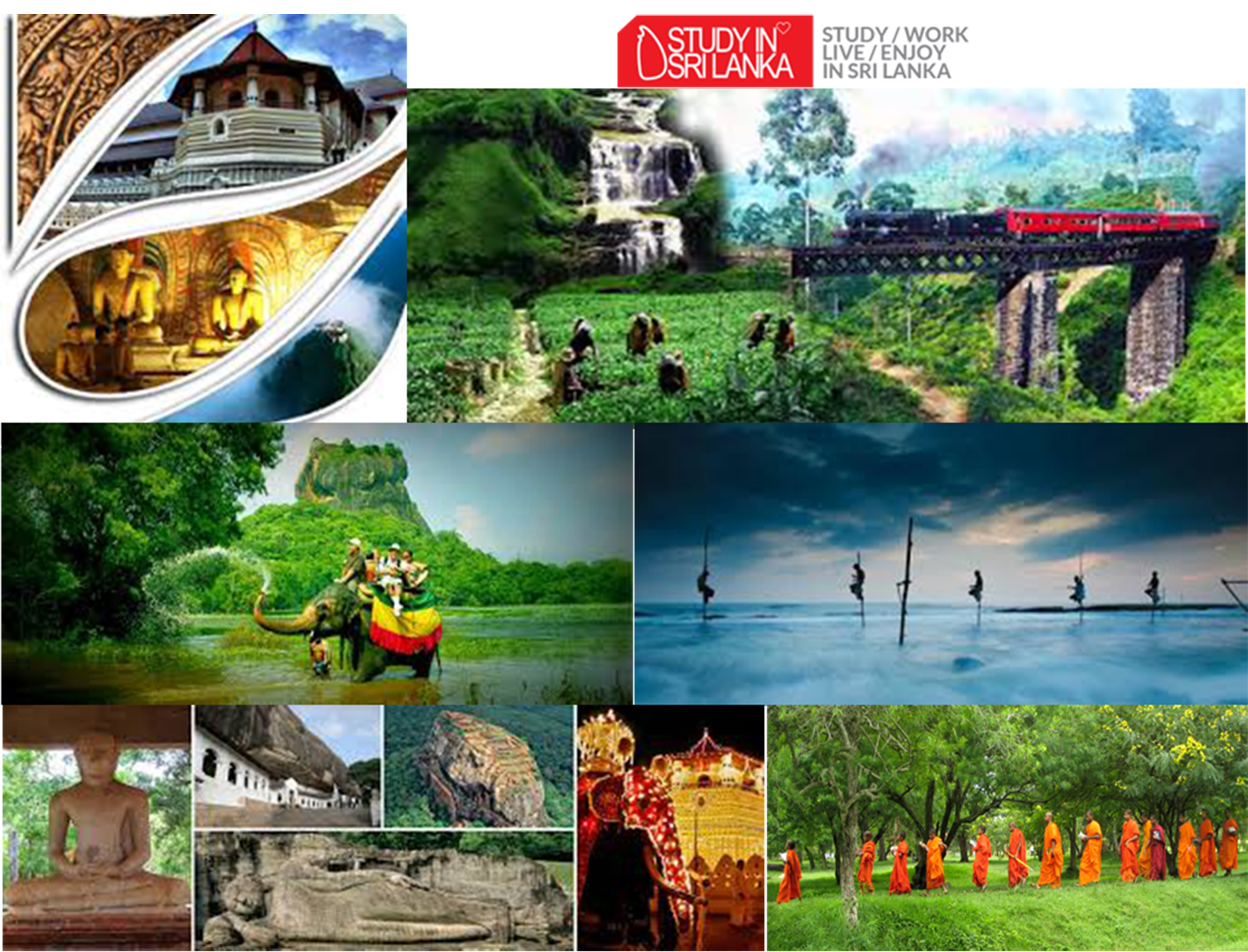
What Sri Lanka has got to make it as an ultimate tourists’ destination? Though the question seems to be easier to answer, the length of the answer is vast. As quoted by Marco Polo "better than any other island in the world", Sri Lanka is a tiny pearl like island located in the southeastern cost shores of India in the Indian Ocean.
The unique aspect about Sri Lanka is the variety it holds within its 65,610 square kilo meters. Sri Lanka is ideal for luxury holidays that are lavishly embraces the fine hospitality and tremendous attractions, beach holidays in the sandy and pristine beaches, family holidays in the luxury bungalows in the misty mountains, adventure holidays in our wildlife parks, virgin rainforests and underwater world, refreshing holidays in the sun-warmed beaches, breezy meadows and lush waterfalls, and artistic holidays in our cultural and heritage sites that possess numerous ancient treasures of arts, architecture, culture, courage and history.
Due to the fact that Sri Lanka is perfectly located in the tropical zone of the world, throughout the year anyone can enjoy the warmest sun, magical breeze and glorious nature. This is the main reason for many Westerners to get attracted to Sri Lanka unconditionally.
The Sri Lankan cultural attractions are widely scattered in the cultural triangle region which encompasses cities of Anuradhapura, Polonnaruwa, and Kandy. These ancient monuments of the Sri Lankan most civilized history consist highly skilled ancient architecture, breathtaking sculptures, and engineering features that challenge even the recent developments. Most of these historical identities were created and built from the 3rd to the 14th century AD. For example the Sigiriya fortress known as the lion rock which was King Kasyapa’s capital and royal palace. The rock fortress was magnificently built with very highly technical irrigation and architectural features.
The natural attractions of Sri Lanka include wild life parks and sanctuaries that attract the adventure seekers where giant elephants and other animals come face to face to meet them. Yala and Wilpathu are remarkable wildlife destinations in Sri Lanka. If you are a nature lover and wants to be lost in the most divinely destination, it is a must to visit Nuwara Eliya where the temperature ranges between 16 to 18 degree Celsius. Here you will be able to see and enjoy a ride in the colonial cottages, scenic lakes, tea trails and gardens, misty mountains and freshly waterfalls and a golf course.
Another aspect of Sri Lankan holidays is the tranquil beaches around the island. These golden sanded beaches that are stretched from the west to the south and from the east to north are well renowned for their diversity in appearance and activities they offer. For example the beaches in the north west coastline of Sri Lanka like Kalpitya and Negombo are ideal for surfing and dolphin watching whereas the western beaches such as Wadduwa, Bentota, Beruwala and Hikkaduwa are famous for sea bath and water sports. Also these beaches are famous for luxury five start hotels that offer perfect world class hospitality. When moving down the coastline towards the south, the beaches in Galle and Tangalle are perfect for relaxation and refreshment. On the other side of the country, the eastern beaches such as Arugambay, Kalkudah, Passikudah and Nilaveli are highly preferred by tourists for the pristine water and calmest seashores.
All what have been listed here are only few glitz of the glorious vacation destination in Asia. Simply saying, Sri Lanka is a one single country with multiple faces and holiday types. So now it is your time to book your extraordinary Asian holiday and add some genuine flavour of amazing holidays.
